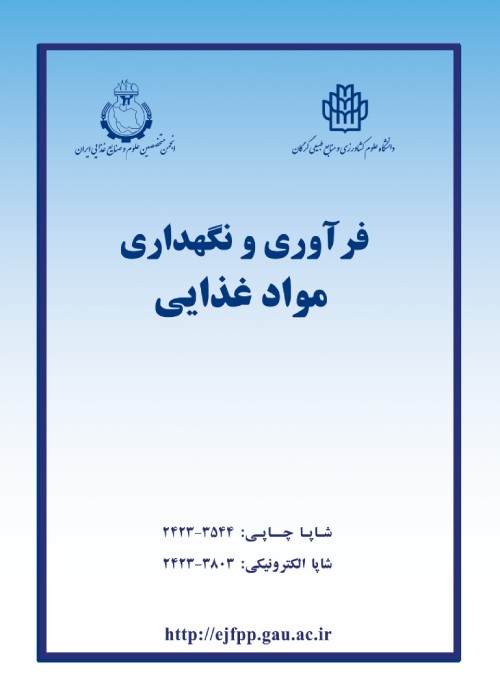Preparation and formulation of micro capsules containing rosemary extract by freeze-drying and spray-drying methods and evaluation of their properties
Today, due to the harms such as the increase in the possibility of heart and carcinogenic risks and the occurrence of stomach problems that artificial food additives have for the body, attention is paid to antimicrobial compounds of plant and animal origin that cause microbial and chemical control and increase the shelf life of food. is an increase. Essences, extracts, and medicinal and edible plants due to their antimicrobial compounds, prevent the growth of pathogenic pathogens and delay the growth of spoilage agents in food, as well as food additives, have received the attention of the food and packaging industry today. The need for antibiotics, controlling the microbial contamination of foods, developing technologies to improve shelf life, removing undesirable pathogens and delaying microbial spoilage, and reducing the resistance of pathogenic microorganisms or increasing cell resistance are some of the benefits of these natural antimicrobials. The use of microencapsulation technology is one of the new methods for increasing the antimicrobial and antioxidant performance of extracts, which helps to increase their performance.
In this research, an HPLC device was used to identify the transferred phenolic compounds of rosemary. Also, with the MIC and MBC tests of rosemary essential oil, its antimicrobial ability was checked. Rosemary essential oil was prepared in the form of microcapsules with maltodextrin/modified starch by spray drying and freeze-drying methods with and without ultrasound. Microcapsule tests including morphological characteristics, entrapment percentage, release percentage, particle size, and properties of rosemary binding to maltodextrin/modified starch microcapsules were investigated. The design was done completely randomly and in three replications. The results of the tests were analyzed using Minitab 16 software at the probability level of 95%.
The results showed that the treatments of microcapsules prepared by freeze-drying and ultrasound had uniform morphological characteristics, smaller particle size, and larger particle size. The size range of microcapsules ranged from 95 μm to 119.2 μm and the polydispersity index was observed from 0.360 to 0.443 between microcapsules treatments. However, the microcapsule treatments prepared by the spray drying method without ultrasound had the highest particle size and the lowest entrapment and release percentage. In terms of the type of bonds created between maltodextrin, modified starch, and rosemary, no significant differences were observed in any of the methods (p>0.05). Total resulting. Finally, microcapsule treatment prepared by freeze-drying method and ultrasound was selected as the optimal treatment. This ratio can be used as an optimal mode in the food industry as an antimicrobial and antioxidant microcapsule.
- حق عضویت دریافتی صرف حمایت از نشریات عضو و نگهداری، تکمیل و توسعه مگیران میشود.
- پرداخت حق اشتراک و دانلود مقالات اجازه بازنشر آن در سایر رسانههای چاپی و دیجیتال را به کاربر نمیدهد.


